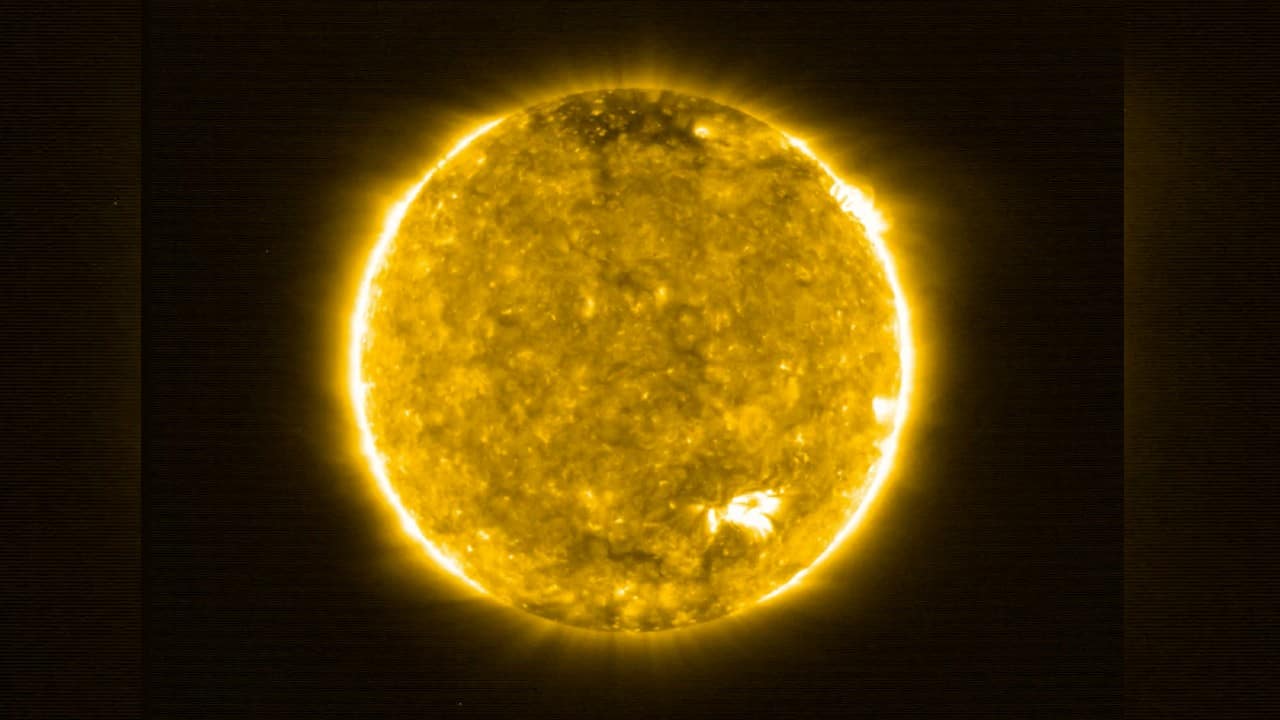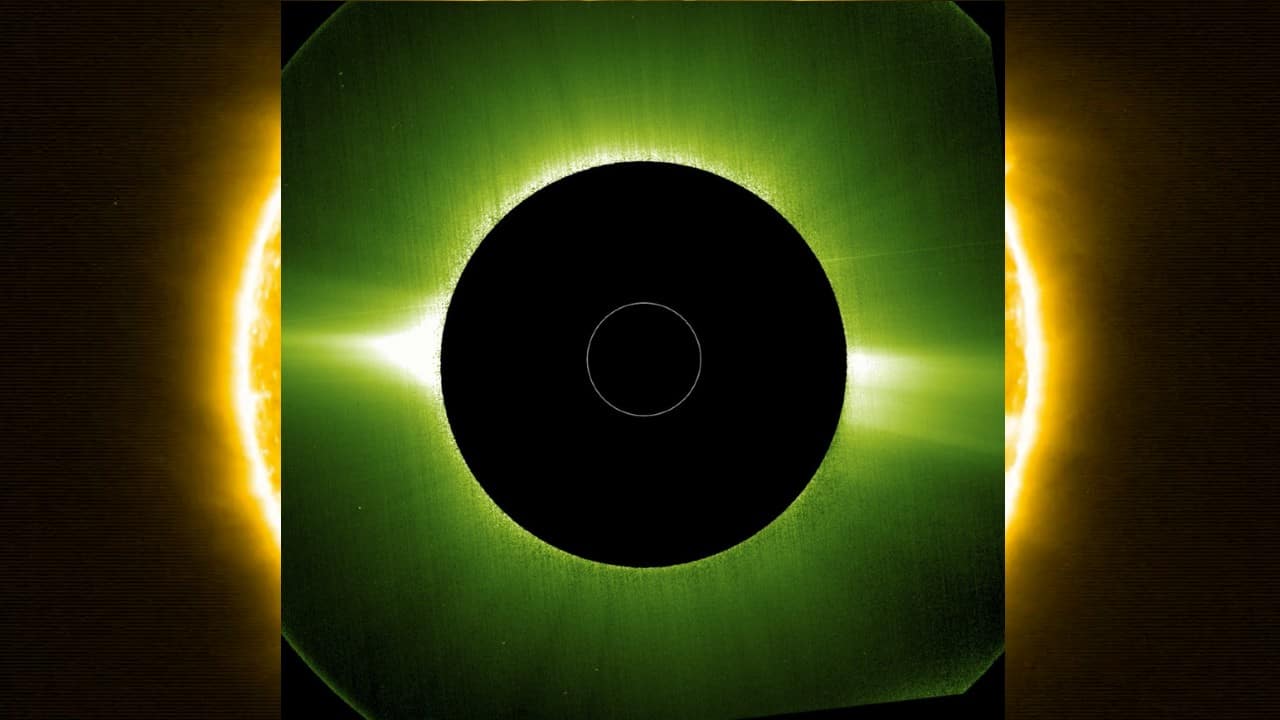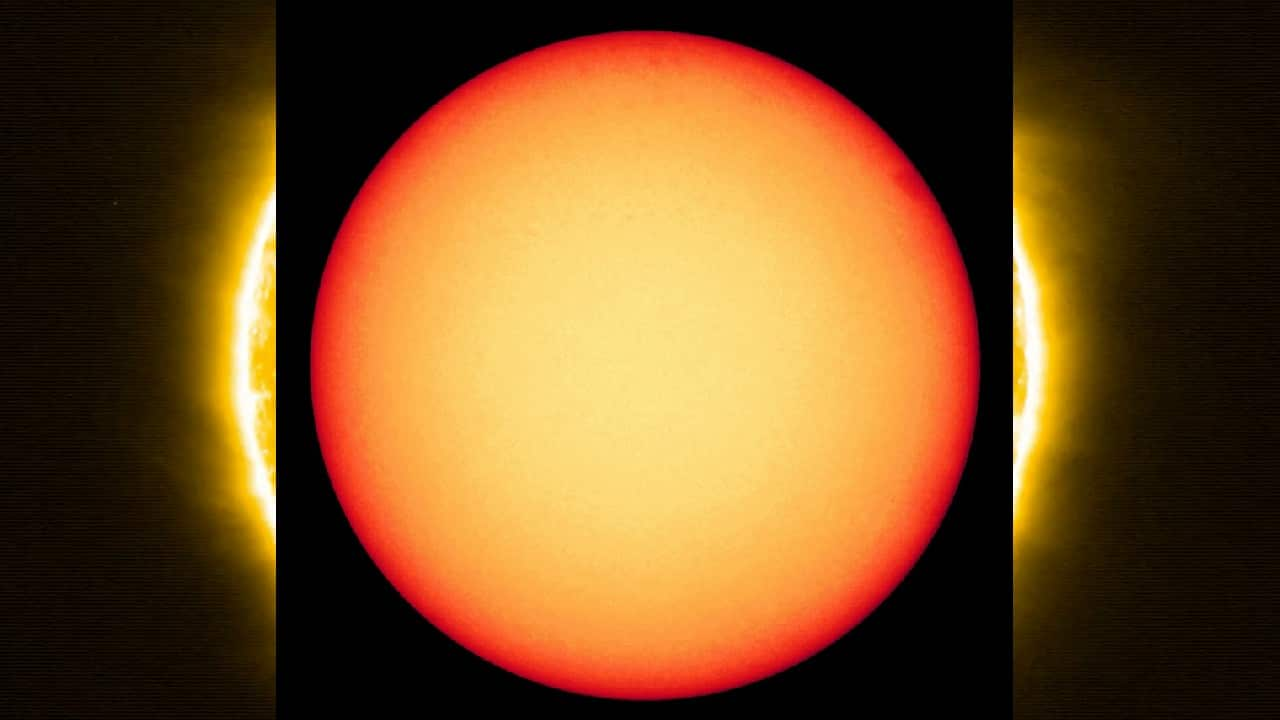During an online press briefing with Solar Orbiter mission experts, the first images from ESA's new Sun-observing spacecraft were released on July 16.
First Published on Jul 17, 2020 08:15 pm

A European Space Agency (ESA) and NASA spacecraft has snapped the closest pictures ever taken of the sun, revealing countless little 'campfires' flaring everywhere. On July 16, scientists released the first images taken by Solar Orbiter, an international collaboration between the ESA, and NASA, launched on February 9 this year to study the Sun. (Image: Solar Orbiter/EUI Team (ESA & NASA); CSL, IAS, MPS, PMOD/WRC, ROB, UCL/MSSL/ via AP)

This image shows the Sun's appearance at a wavelength of 17 nanometers, which is in the extreme ultraviolet region of the electromagnetic spectrum. During an online press briefing with Solar Orbiter mission experts, the first images from ESA's new Sun-observing spacecraft were released on July 16. (Image: Solar Orbiter/EUI Team (ESA & NASA); CSL, IAS, MPS, PMOD/WRC, ROB, UCL/MSSL/ via AP)

Solar Orbiter spots ‘campfires’ on the Sun. Locations of campfires are annotated with white arrows. (Image: Solar Orbiter/EUI Team (ESA & NASA); CSL, IAS, MPS, PMOD/WRC, ROB, UCL/MSSL)

An image of the Sun, roughly halfway between the Earth and the Sun, taken by The Extreme Ultraviolet Imager (EUI) and Polarimetric and Helioseismic Imager (PHI) instruments onboard The Solar Orbiter spacecraft on May 30, 2020. (Image: Solar Orbiter/EUI/ESA/NASA / AFP)

Images of the Sun, taken by The Extreme Ultraviolet Imager, Polarimetric and Helioseismic Imager instruments onboard The Solar Orbiter spacecraft from May 30 to June 18, 2020. (Image: Solar Orbiter/EUI/ESA/NASA / AFP)

Measurements of the magnetic field near the Sun’s surface allowing the investigation of the Sun’s interior via the technique of helioseismology taken by Polarimetric and Helioseismic Imager onboard The Solar Orbiter spacecraft from May 30 to June 18, 2020. (Image: Solar Orbiter/EUI/ESA/NASA / AFP)

An image of the corona of the Sun, taken by The Metis instrument onboard The Solar Orbiter spacecraft from May 15-June 21, 2020. (Image: Solar Orbiter/MetisTeam/ESA/NASA / AFP)

Measurements of the magnetic field near the Sun’s surface allowing the investigation of the Sun’s interior via the technique of helioseismology taken by Polarimetric and Helioseismic Imager onboard The Solar Orbiter spacecraft from May 30 to June 18, 2020. (Image: Solar Orbiter/EUI/ESA/NASA / AFP)

An image of the Sun, roughly halfway between the Earth and the Sun, taken by The Solar Orbiter spacecraft on May 30, 2020. (Image: Solar Orbiter/EUI/ESA/NASA / AFP)
Copyright © e-Eighteen.com Ltd All rights resderved. Reproduction of news articles, photos, videos or any other content in whole or in part in any form or medium without express writtern permission of moneycontrol.com is prohibited.
